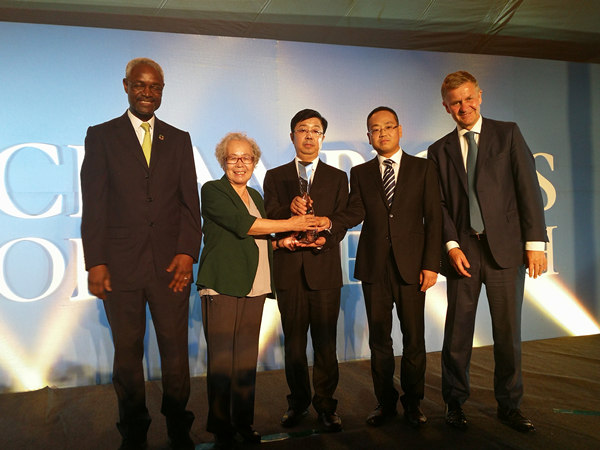


At many companies, the term "innovation strategy" refers simply to an agenda for new product development or a technology roadmap for research and development. This is like picking up a single leaf in the forest and calling it a tree.
Innovation strategy is not merely about the next product launch or patent registration. It's about exactly how your company intends to become (or remain) a world-class innovation champion.
Let's face it, not many organizations have so far managed to build a deep, enduring capability for innovation - one that consistently drives profitable revenue growth and that delivers a strong, competitive advantage over the longer term. This should be the highest goal and purpose of any innovation strategy.
The real strategic issue facing every company is this: How are we going to create growth and shareholder value in the future?
It sounds like a simple question. But organizations have had a wide variety of answers at their disposal over the last few decades. For some, the solution was "going global", or cutting costs or improving quality.
For others, it was raising productivity, or "offering the best customer service" or standing out with excellent product design.
Today, however, these traditional strategies are running out of steam. They no longer offer very much potential for driving growth and wealth creation over the longer term.
As marketing expert Steve Yastrow put it in a recent blog, they have become nothing more than basic business hygiene - the "brushing your teeth" of running a company'.
Radical change
There is a growing realization around the world that organizations have only one strategic option left for delivering growth, company value, market share and competitive advantage. And that's radical innovation - in products, services, technologies, processes, cost structures, marketing strategies and business models.
However, an honest assessment of the business landscape reveals that radical innovators are still very few and far between.
When you pick up a copy of Forbes or BusinessWeek magazines, you inevitably find yourself reading about the usual suspects - a small handful of innovation champions like Apple and Google.
It simply seems incredibly difficult for all those other companies out there to make the transition from innovation laggards to innovation leaders. And that's why there's an urgent need right now for organizations to develop a corporate innovation strategy - a blueprint for building, sustaining and managing an enterprise-wide innovation capability.
Nancy Tennant, co-author of Strategic Innovation and former global vice president of innovation at Whirlpool, the appliance giant, says that an innovation strategy should encompass "a wide range of actions that assimilate, incorporate, internalize and imbue the entire fabric or lifeblood of an organization with the mindset and skills of innovation".
Owning innovation
At the core of this strategy must be a broad-based vision of innovation embedment - a vision that is created and owned by the top team, that is accessible to all levels of the organization, that is both feasible and flexible, that can guide decision making and that can be clearly and easily communicated.
It must be based on a highly systemic view of the organization- a sense of connection, interaction and integration between all of the various parts of the system - where the whole is much greater than the sum of its parts. And it must enable each and every employee to understand the link between individual performance and the company's strategic innovation goal.
Once this vision is in place and widely shared across the company, the next imperative is to turn strategy into action by making the necessary changes to leadership commitment and accountability, organizational infrastructure, management policies, resource allocation, knowledge management, rewards and recognition systems and competence development programs. All of these organizational components need to be hard-wired into the company's innovation strategy.
"Can companies really make the gargantuan leap from boring to breakout, and from insipid to inspired? Consider an encouraging example.
When former Whirlpool CEO Dave Whitwam set out to define his company's global innovation strategy back in 1999, he chose to call it "Innovation from Everyone and Everywhere". This was a huge aspiration, considering that at the time Whirlpool had 68,000 employees in 170 countries, as well as 50 manufacturing and technology research centers around the globe.
The Whirlpool model
But Whirlpool rose to the challenge, and today the company has become a best-practice model for innovation as an enterprise capability across a large, global organization.
The key objective of Whirlpool's innovation strategy was to help every single employee to think outside the traditional "white box" of home appliances. Employees were asked to imagine exciting, customer-relevant solutions that create new wealth for the company.
The outcome has been a stream of breakthrough ideas for products and businesses that have come from all over the Whirlpool organization. As a result, Whirlpool has seen a steep upturn in its annual revenues from innovative new products.
In the three years between 2003 and 2006, for example, these revenues rose from $78 million to $1.6 billion (a figure over 20 times higher). And the whole strategic transition has made a massive contribution to growing Whirlpool's overall revenues and profits.
Today, the company has well over 500 projects in its innovation pipeline representing expected future revenues of $3.5 billion.
And, having witnessed the power of Whirlpool's innovation strategy firsthand, the current CEO, Jeff Fettig, is planning no change of course in the future. "If we keep innovating, we'll keep growing," he told BusinessWeek.
What Whirlpool's example amply demonstrates is that it is entirely possible to turn an "old-line" industrial organization into a catalyst for continuous, break-the-rules innovation.
But it can't be done piecemeal. Rather, a company has to be willing to recalibrate its whole organizational system around innovation.
And that is never going to happen unless it develops a wall-to-wall, top-to-bottom, "soup to nuts" innovation strategy.
The author is a global business strategist and author whose books have been translated in more than 20 languages. His new book, Innovation to the Core (co-authored with Peter Skarzynski), was published in 2008 by Harvard Business School Press. The views expressed here are his own.
(China Daily 10/19/2009 page2)













